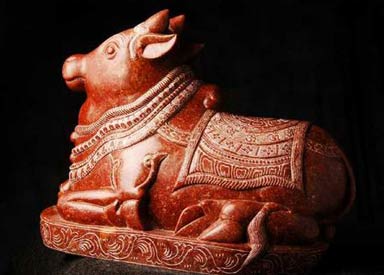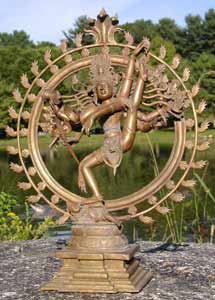MAY THE SUPREME POWERS OF LORD SHIVA BLESS ALL OF YOU !

Lord Shiva, the third in the trinity is Shiva, also known as Maheshwar (the great Lord), Mahadeva (the great God), Shambhu, Harihara (in union with Vishnu), Pinaakdhari (bearer of the axe), Mritunjaya (conquerer of death), and represents destruction, austerity & the malignant forces of life.
He is also represented as Mahakala & Bhairava, the terrible as well as many other forms including Rudra (howler). In ancient vedic hymns. Rudra is the malignant God of storm and wind, & is also considered the god of death. Rudra fires arrows of sickness at gods. men and animals. He is the father of Maruts, who were occasionally called Rudras.
As Rudra, he is identified with the star Sirius (Sothis), and is a supreme hunter. His appearance and nature changed with the emergence of Hiduism, when he became a beneficent and beautiful God, the Lord of animals and the patron of the hunters.
His name changed to Shiva, and is since then one of the most prominent deities of Hinduism. Shiva is also the master of all beings of the underworld including demons (bhutas ), ghosts (pretas), and pishachas (flesh eaters) but his destructive activities are compensated by his attitude of favors to his devotees.
He is originator of music and dance (Nataraja - the Dancing Shiva is the symbolism of the dance called Tandava), creator of grammar (vyaakrana), inventor of Yoga & a perfect householder as well as ascetic.














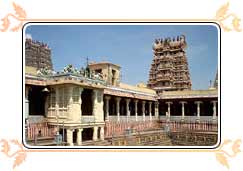
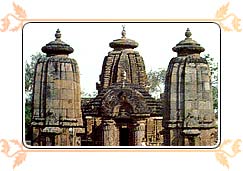
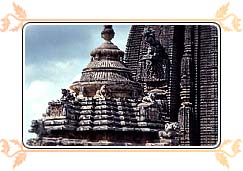
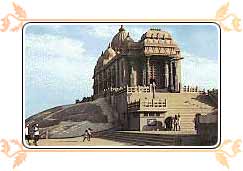
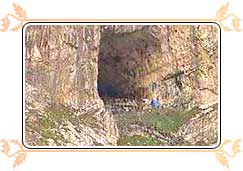 Amarnath Yatra
Amarnath Yatra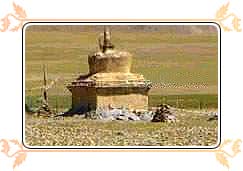 Mt. Kailash is claimed to be the apex of the Hindu religious axis, is also one of the highest mountains in Tibet at 22,022 feet. Lord Shiva resides over here among the peaceful Himalayas. A mythological story says that Lord Shiva once built a house for himself but gave it away to a devotee who asked for it. Thus without changing his residence he settled in the mountain of Kailash. This is his abode where he stays with his whole family including his wife Goddess Parvati and children Lord Ganesha and Lord Kartikiya and the other Shiv Ganas (group of Shiva Devotees) like Nandi and others. According to ancient religious texts, the abode of Lord Vishnu is called Vaikuntha, the abode of Lord Bhrama is called Bhramaloka and the abode of Lord Shiva is called Kailash. Of the three, one can only go bodily and return in this life from Kailash having experienced divinity. The Hindus, Bons and Jains all alike travel to this place as pilgrims. A journey to Kailash is considered as once in a lifetime achievement.
Mt. Kailash is claimed to be the apex of the Hindu religious axis, is also one of the highest mountains in Tibet at 22,022 feet. Lord Shiva resides over here among the peaceful Himalayas. A mythological story says that Lord Shiva once built a house for himself but gave it away to a devotee who asked for it. Thus without changing his residence he settled in the mountain of Kailash. This is his abode where he stays with his whole family including his wife Goddess Parvati and children Lord Ganesha and Lord Kartikiya and the other Shiv Ganas (group of Shiva Devotees) like Nandi and others. According to ancient religious texts, the abode of Lord Vishnu is called Vaikuntha, the abode of Lord Bhrama is called Bhramaloka and the abode of Lord Shiva is called Kailash. Of the three, one can only go bodily and return in this life from Kailash having experienced divinity. The Hindus, Bons and Jains all alike travel to this place as pilgrims. A journey to Kailash is considered as once in a lifetime achievement.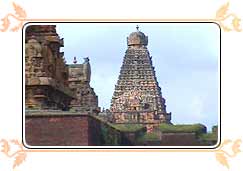
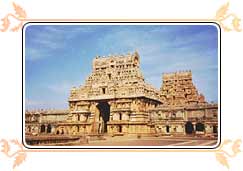 The Big Temple. Rajaraja Cholan, the Great Chola king built Bragatheeswarar Temple. Big Temple is an example for the Indian sculptural architecture greatness. Temple is surrounded by moat on two sides and Grand Anaicut river on the other side. This temple is unique to have the tallest tower over the sanctum sanctorum unlike the other temples. It is 216 feet tall. The stupa at the top is made of bronze.The walls of the sanctum are covered, with the wall paintings of Chola and Nayak periods, comparable to the famous Ajanta cave frescoes.
The Big Temple. Rajaraja Cholan, the Great Chola king built Bragatheeswarar Temple. Big Temple is an example for the Indian sculptural architecture greatness. Temple is surrounded by moat on two sides and Grand Anaicut river on the other side. This temple is unique to have the tallest tower over the sanctum sanctorum unlike the other temples. It is 216 feet tall. The stupa at the top is made of bronze.The walls of the sanctum are covered, with the wall paintings of Chola and Nayak periods, comparable to the famous Ajanta cave frescoes.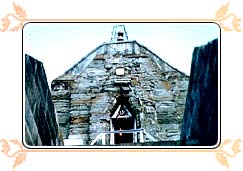
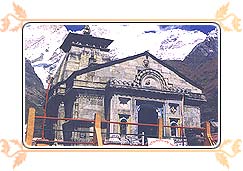 Kedarnath is a majestic sight, standing in the middle of a wide plateau surrounded by lofty snow covered peaks. The present temple, built in the 8th century by Adi Shankaracharya, stands adjacent to the site of an earlier temple built by the Pandavas. The inner walls of the assembly hall are decorated with figures of various deities and scenes from mythology. Outside the temple door a large statue of the Nandi Bull stands as guard.
Kedarnath is a majestic sight, standing in the middle of a wide plateau surrounded by lofty snow covered peaks. The present temple, built in the 8th century by Adi Shankaracharya, stands adjacent to the site of an earlier temple built by the Pandavas. The inner walls of the assembly hall are decorated with figures of various deities and scenes from mythology. Outside the temple door a large statue of the Nandi Bull stands as guard.